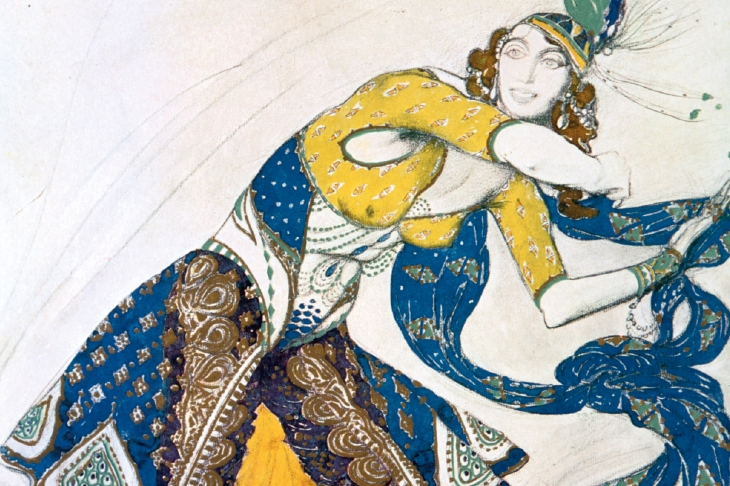In our age of elasticated leisurewear, ready meals and box sets on telly, it is exhilarating to read about people who would come down to dinner in peacock-feather head-dresses, swathed in large snakes and dripping ornamental chicken blood. The Marchesa Casati has a loyal cult following and her bizarre style still influences fashion designers; but by placing her alongside two sisters in scandal in this triple biography, Judith Mackrell has done something very clever and entertaining. The author, the Guardian’s dance critic, has already championed controversial women in her multiple biography Flappers and in Bloomsbury Ballerina, about Lydia Lopokova. Now she recounts the lives of three wildly ambitious yet vulnerable women with page-turning pace and intelligence.
Hordes of visitors to Venice wind up at Peggy Guggenheim’s renowned museum on the Grand Canal — a one-storey edifice that was destined to become an 18th-century pile until the Venier family went bust at the ground floor. Confronted by Guggen-heim’s lasting legacy, it is easy to overlook two equally intriguing previous chatelaines of this ‘unfinished palazzo’.
They make a marvellous trio. All three women arrived there after crises and broken marriages to make the place their personal stage, with Venice providing the perfect backdrop. Traditionally tolerant towards the carnivalesque and the erotically audacious, this exquisite city ‘sprung from the sea’ allowed them all to be large, exotic fish in a small lagoon. If Luisa Casati became a walking work of art in the gothic belle époque, Doris Castlerosse used her sexual glamour to ascend through the shiny 1930s, garnering as much jewellery as possible along the way. Peggy Guggenheim was also a collector of lovers, but one who merged art and life until her home became an astounding gallery.
Orphaned as a shy, gangly teenager and left with a vast fortune, Casati transformed herself into a bizarre creature of theatrical beauty. She paid the Ballets Russes designer Leon Bakst to create over 40 fantastic costumes for her; as St Sebastian, she was covered in arrows containing tiny electric lights, which short-circuited and sent her flying. From 1910–1924, she became a Venetian attraction, clad in Fortuny gold or tiger skins, sprawled on her gondola with a cheetah or parading with her extravagantly dressed black manservant. Her pets included monkeys, parrots, greyhounds, snakes and albino blackbirds dyed different colours. She was involved with the poet-soldier-seducer D’Annunzio and had a fling with Augustus John (who painted her), but was not so sexually wild as often supposed; in fact, Mackrell convincingly suggests that she was aspergic.
Hailing from middle-class Streatham, Doris Delevingne was equally keen on reinvention, if less partial to gothic drama and snakes. She and Luisa had friends in common (‘La Casati’ visited the eccentric Lord Berners with her boa constrictor, while Lady Castlerosse intrigued his unshockable guests by seducing Cecil Beaton); but Mackrell doesn’t labour the connections. Via a series of generous boyfriends, Doris married Lord Castlerosse, but continued to declare that ‘an Englishwoman’s bed is her castle’ (Churchill fell under her spell and painted her).
After her divorce in the late 1930s, Doris took up with a sporty American heiress, who didn’t like parties, but bought her outsize jewels and then the ‘unfinished palazzo’. The place was modernised, with marble bathrooms and a motorboat moored outside and Doris (the salonnière) threw glamorous cocktail parties — guests included Noël Coward, Douglas Fairbanks and the young Prince Philip of Greece. Nevertheless, war loomed and her era was soon over.
In 1948, a middle-aged Peggy Guggen-heim seized the opportunity to reconstruct her life after a disastrous second marriage to Max Ernst. Rich and discerning enough to have assembled an astonishing collection of contemporary art, she had ground-breaking galleries in her native New York and London, bought up masses of art in wartime Paris as the Nazis approached (a daring enterprise for a Jew) and later championed Jackson Pollock before anyone else. In Venice, she helped revive the postwar Biennale and, like Luisa, became a local attraction, floating about in a fancy gondola with her Lhasa terriers, and sporting ostentatious dark glasses.
Mackrell’s subjects didn’t know each other. They had different nationalities, characters and ambitions, yet this book connects them as a fascinating trinity of divas, analysed beyond the easy caricatures and clichés. Experts in seduction (artistic and erotic), they were calculating yet reckless and atrocious at traditional feminine skills and domesticity. Each had a complex and difficult life in various locations, but flourished at the Unfinished Palazzo, blossoming like strange, beautiful flowers rising from the murky Grand Canal.






Comments